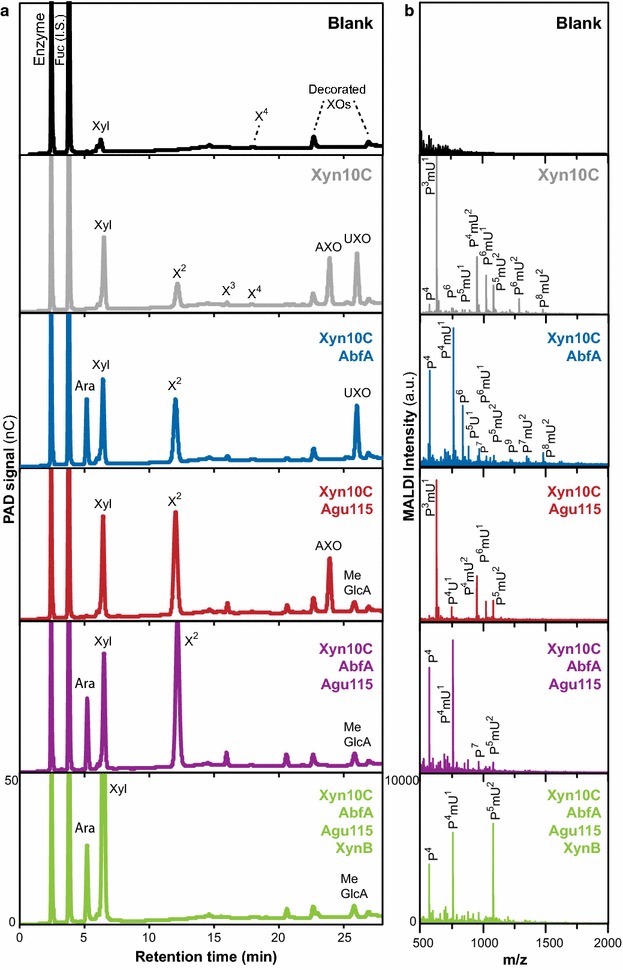Fig. 3.

Identification of oligosaccharide reaction products from different enzyme combinations. a The chromatographic profiles obtained by HPAEC-PAD enable the identification of the monosaccharides and oligosaccharides released by the different enzyme incubations. Ara, Xyl, and MeGlcA refer to the arabinose, xylose, and 4-O-methyl glucuronic acid monosaccharides, respectively. X2, X3 and X4 refer to xylobiose, xylotriose, and xylotetraose, oligosaccharides, respectively, identified by elution of standards. The presence of Araf-decorated xylo-oligosaccharides (AXOs) and MeGlcA-decorated xylo-oligosaccharides (mUXOs) can be specifically assigned in the chromatograms due to the enzymatic activities: AXOs remain after MeGlcA removal by Agu115, while mUXOs remain after Araf removal by AbfA. The scales of the PAD intensities are the same for all the chromatographic profiles. b MALDI-ToF–MS assignment of the oligosaccharides released with the different enzyme incubations. P pentose (Xylp or Araf), U uronic acid (GlcA), mU: 4-O-methyl glucuronic acid (4-O-MeGlcA). Oligosaccharides that remain after enzyme treatment are named P 4, P 4 mU 1, and P 5 mU 2, where P represents a pentose (xylose or arabinose) and mU a methylated uronic acid (4-O-MeGlcA). Thus, P 4 denotes an oligosaccharide with 4 pentose units, while P 4 mU 1 has an additional MeGlcA substituent. The pentoses (xylose and arabinose) cannot be distinguished by MALDI-ToF–MS due to their isobaric nature. These residual structures are discussed below. The scale of the MALDI intensity is the same for all the MS spectrograms
